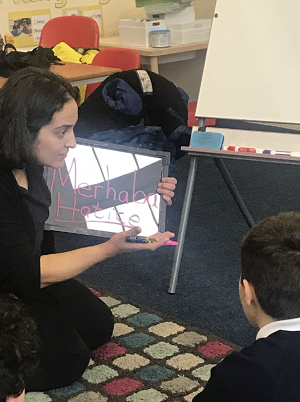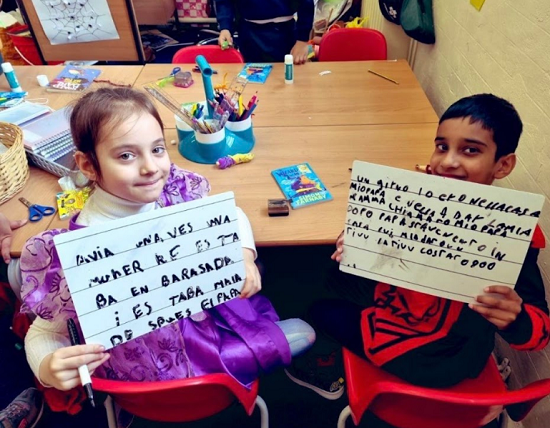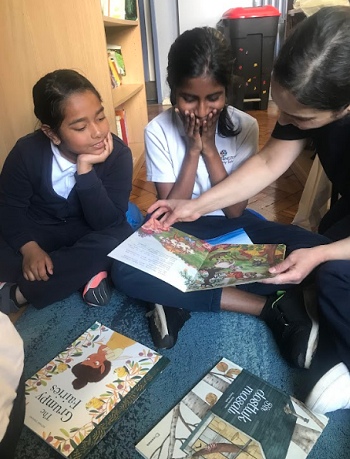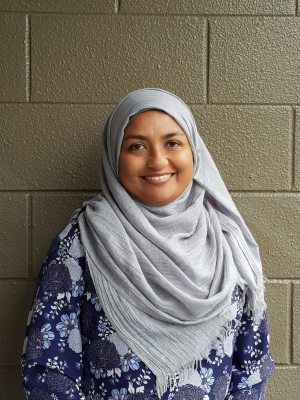Building a Whole-School Approach to Multilingualism: A Leader’s Perspective
 I am delighted to welcome guest blogger Soofia Amin, Assistant Head Teacher at Kensington Primary and Specialist Lead in education for multilingualism. Soofia draws on a wealth of leadership experience in supporting multilingual pupils and their families. Her award-winning work has been recognized nationally, and she continues to shape best practices through her collaborations with academic institutions like UCL and London Metropolitan University. In this post, Soofia shares powerful reflections and practical strategies for creating a truly language-friendly school — one where multilingualism is embraced as a strength, not a barrier.
I am delighted to welcome guest blogger Soofia Amin, Assistant Head Teacher at Kensington Primary and Specialist Lead in education for multilingualism. Soofia draws on a wealth of leadership experience in supporting multilingual pupils and their families. Her award-winning work has been recognized nationally, and she continues to shape best practices through her collaborations with academic institutions like UCL and London Metropolitan University. In this post, Soofia shares powerful reflections and practical strategies for creating a truly language-friendly school — one where multilingualism is embraced as a strength, not a barrier.
The Foundations
How do we move from isolated multilingual strategies to a fully embedded, whole-school approach? It’s a question I’ve wrestled with both as an educator and as someone who grew up multilingual.
I still remember sitting in my West London classroom, instinctively separating my home language, Urdu, from my school life. Urdu belonged at home — wrapped in the warmth of my family, in cultural gatherings, in films and songs — but never in the classroom. It felt like something private, something less than English, something that didn’t quite belong. No one ever told me this explicitly, but the message was there — unspoken yet deeply ingrained.
Years later, as a school leader, I realised how many of my colleagues had lived through the same quiet silencing. One senior leader once shared how being labelled “EAL” felt belittling — despite the fact he spoke five languages fluently. That moment struck a deep chord. How often do we, even with the best of intentions, unintentionally reinforce the idea that multilingualism is a barrier rather than a strength?
If we truly want to embed a whole-school approach to multilingualism, we must start with ourselves. Before we introduce strategies or interventions, we need to pause and reflect:
-
- What messages did we receive about language growing up?
- How have those experiences shaped our beliefs and the way we lead?
A truly multilingual school culture isn’t built solely through initiatives — it’s built through mindset. It begins with honest, courageous conversations about how we value language, both as individuals and as a team. As Jim Cummins reminds us, when schools affirm a student’s identity and home language, they create the conditions for academic empowerment. Conversely, when languages are ignored or suppressed, students often internalise a sense of inferiority that impacts not only their self-esteem but also their achievement.
 In this blog post, I’ll share practical guidelines and lived examples from our journey at Kensington Primary to show how you can help your school move from intent to meaningful, sustainable impact. But like any strong structure, it must begin with the right foundation — and that foundation is our mindset.
In this blog post, I’ll share practical guidelines and lived examples from our journey at Kensington Primary to show how you can help your school move from intent to meaningful, sustainable impact. But like any strong structure, it must begin with the right foundation — and that foundation is our mindset.
Building on the Foundations: Four Pillars of Whole-School Multilingualism
Before multilingualism becomes visible in classrooms, corridors, and curriculum maps, it must be intentionally embedded through school structures. At Kensington Primary, we identified four key pillars:
1. A Whole-School Language Policy
Not a dusty document, but a living framework that promotes translanguaging, first-language use, and multilingual pedagogies — not just for multilingual pupils but for all learners.
2. High-Quality Continuous Professional Development
We reframed multilingualism as an asset through reflective, research-informed professional development. Staff explored and deepened their understanding of translanguaging, language interdependence, and multilingual pedagogies. True transformation came when staff no longer saw multilingualism as something extra, but as something essential.
3. Student Voice and Ownership
Pupils are given meaningful opportunities to celebrate, use, and lead with their languages. Multilingual identity is no longer something to be hidden; it is central to their learning journey.
4. Family Engagement That Embraces Home Languages
We fostered open, meaningful dialogue with families about the value of home languages, helping them gain confidence and recognise the strength these languages bring to their children’s development. From using bilingual communication to cocreating learning experiences, families are no longer viewed as needing to “adapt” — they are essential partners in language learning and cultural enrichment.
Curriculum as a Catalyst: Making Multilingualism Visible Through WoLLoW
To ensure these values are translated into day-to-day teaching and learning, we needed a curriculum that reflected them. This led us to adopt WoLLoW (World of Languages, Languages of the World) — a curriculum designed to spark curiosity about language, exploring its history, structure, and cultural diversity. At Kensington Primary, we integrated WoLLoW into our curriculum to help pupils better understand how languages work, deepen their grammatical awareness, and celebrate linguistic diversity through engaging, cross-curricular activities.

WoLLoW allowed us to embed multilingualism as a curriculum principle, not just a bolt-on. Through this approach, we ensured:
-
- First languages are integrated into our curriculum, not limited to heritage weeks or token mentions. Pupils use their full linguistic repertoire to access and explore the curriculum.
- Translanguaging is used across all subjects, normalising the fluid use of languages in classrooms, particularly in early conceptual understanding and oracy.
- Teacher pedagogy shifts as staff begin to see multilingualism not as a hurdle but as a tool for deepening learning and engagement.
- Language awareness is fostered in all pupils, building curiosity, empathy, and flexibility — skills essential in an interconnected world.
The Language Friendly School Movement: A Global Framework for Change
Alongside WoLLoW, we drew inspiration from the Language Friendly School movement, founded by the Rutu Foundation in the Netherlands. Its core vision resonated deeply with our values:
-
- Every child feels safe and valued in their language identity.
- Every language is welcomed and visible in the school environment.
- Multilingualism is embedded in teaching and learning, not reduced to a support need.
Becoming a language-friendly school requires more than celebratory flags or language displays. It demands a long-term commitment to systemic change — something we’ve pursued through a range of practical, inclusive initiatives.
Putting It Into Practice: Our Language-Friendly Initiatives
 Here are just some of the ways we’ve made multilingualism real, visible, and valued in daily school life:
Here are just some of the ways we’ve made multilingualism real, visible, and valued in daily school life:
A Thriving Multilingual Library
What began as a small project has grown into a student-led library with books in more than 40 languages. Pupils and families curate, promote, and recommend titles, creating a space where multilingual reading is both normal and celebrated.
Multilingual Storytime
We invite parents, grandparents, and families to share stories in their home languages. These sessions — featuring Tamil, Urdu, Turkish, Bengali, Spanish, and more — showcase the beauty of storytelling and bridge home and school.
After-School Clubs in First Languages
We run structured clubs where pupils explore their first languages — Bengali, Italian, Turkish, Romanian, and Urdu. These aren’t just enrichment activities; they are affirmations of identity.
Final Reflections: From Mindset to Meaningful Change
If we want to nurture multilingualism, we must stop treating it as a niche intervention. It is a central part of identity, cognition, well-being, and belonging. And it belongs in every classroom and in every corner of our educational setting. Creating a language-friendly school doesn’t mean we abandon English — it means we embrace the rich, multilingual realities of our pupils and harness their strengths to support all learners.
It starts with us — our stories, our mindsets, our willingness to reimagine what a truly inclusive school can be.
Additional Reading
Cummins, J. (2001). Negotiating Identities: Education for Empowerment in a Diverse Society. California Association for Bilingual Education.
Moll, L. C., Amanti, C., Neff, D., & Gonzalez, N. (1992). Funds of knowledge for teaching: Using a qualitative approach to connect homes and classrooms. Theory Into Practice, 31(2), 132–141. https://doi.org/10.1080/00405849209543534


